By Adam Sanchez, Brady Bennon, Deb Delman, and Jessica Lovaas
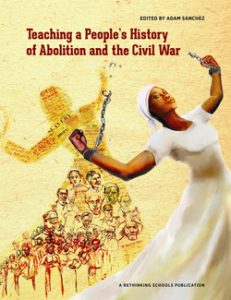 For all its weaknesses and divisions, the abolition movement was perhaps the most significant social movement in U.S. history: an anti-racist movement, a labor movement, a feminist movement, a free speech movement, an antiwar movement.
For all its weaknesses and divisions, the abolition movement was perhaps the most significant social movement in U.S. history: an anti-racist movement, a labor movement, a feminist movement, a free speech movement, an antiwar movement.
The secession of Southern states in response to Abraham Lincoln’s election, which triggered the Civil War, is inexplicable without the fear — and sometimes paranoia — the abolition movement kindled in the Southern imagination.
And yet our textbooks cover this essential social movement in a few cursory pages, at best. In curricula and mainstream media, social progress is assigned to Great Men. Young people fail to learn the lesson they need so desperately in order to recognize their own potential power today: Throughout history, social movements have made the world a better place — more democratic, more equal, more just.
The purpose of the abolitionist mixer is to familiarize students with the stories of famous and lesser-known abolitionists and introduce them to a number of the individuals and themes they encounter both in the role play “‘If There Is No Struggle. . .’: Teaching a People’s History of the Abolition Movement” and the reading “A People’s History of the Abolition Movement.”
Materials Needed
- Copies of “Abolitionist Mixer: Questions” (Handout 4-A) for every student.
- “Mixer Roles” (Handout 4–B), cut up. One for every student in the class.*
- Blank nametags. Enough for every student in the class.
- Copies of “A People’s History of the Abolition Movement” (Handout 4–C) for every student.
Roles included in this mixer:
| Angelina Grimké | John Brown | David Ruggles |
| William Lloyd Garrison | Harriet Forten Purvis | Harriet Tubman |
| Harry Jarvis | Lucretia Mott | Elizabeth Cady Stanton |
| Sojourner Truth | David Walker | Frederick Douglass |
| William Wells Brown | Elijah Lovejoy | Jermain Wesley Loguen |
| Wendell Phillips | Harriet Beecher Stowe | Solomon Northup |
| Thaddeus Stevens | Charles Sumner | Robert Smalls |
| William Walker | Elizabeth Gloucester | Lewis Hayden |
| William Cooper Nell | Harriet Jacobs | Sarah Parker Redmond |
| Maria Stewart |
The lesson PDF includes Handout 4-A, Handout 4-5, and Handout 4-C.
Classroom Story
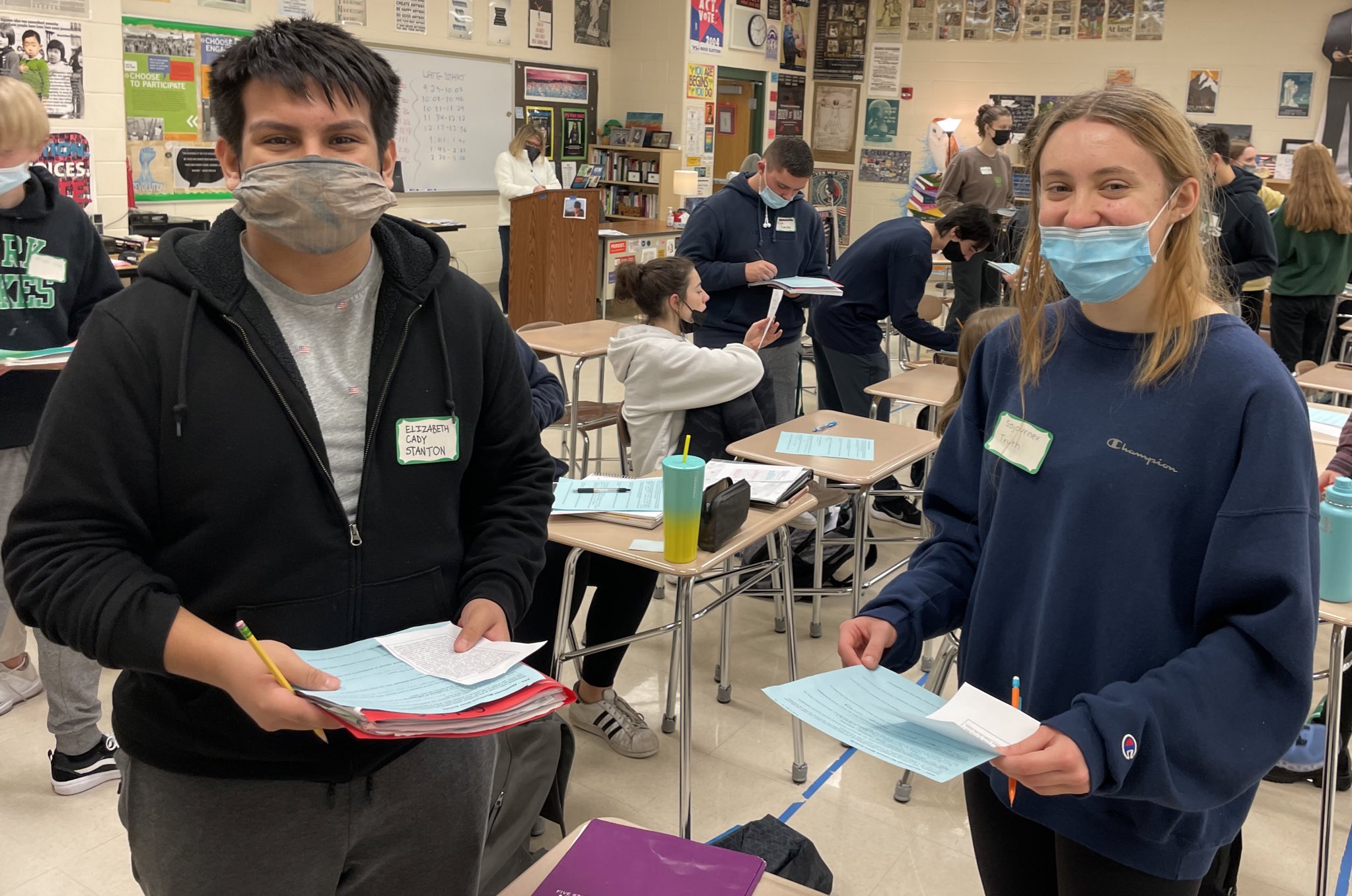
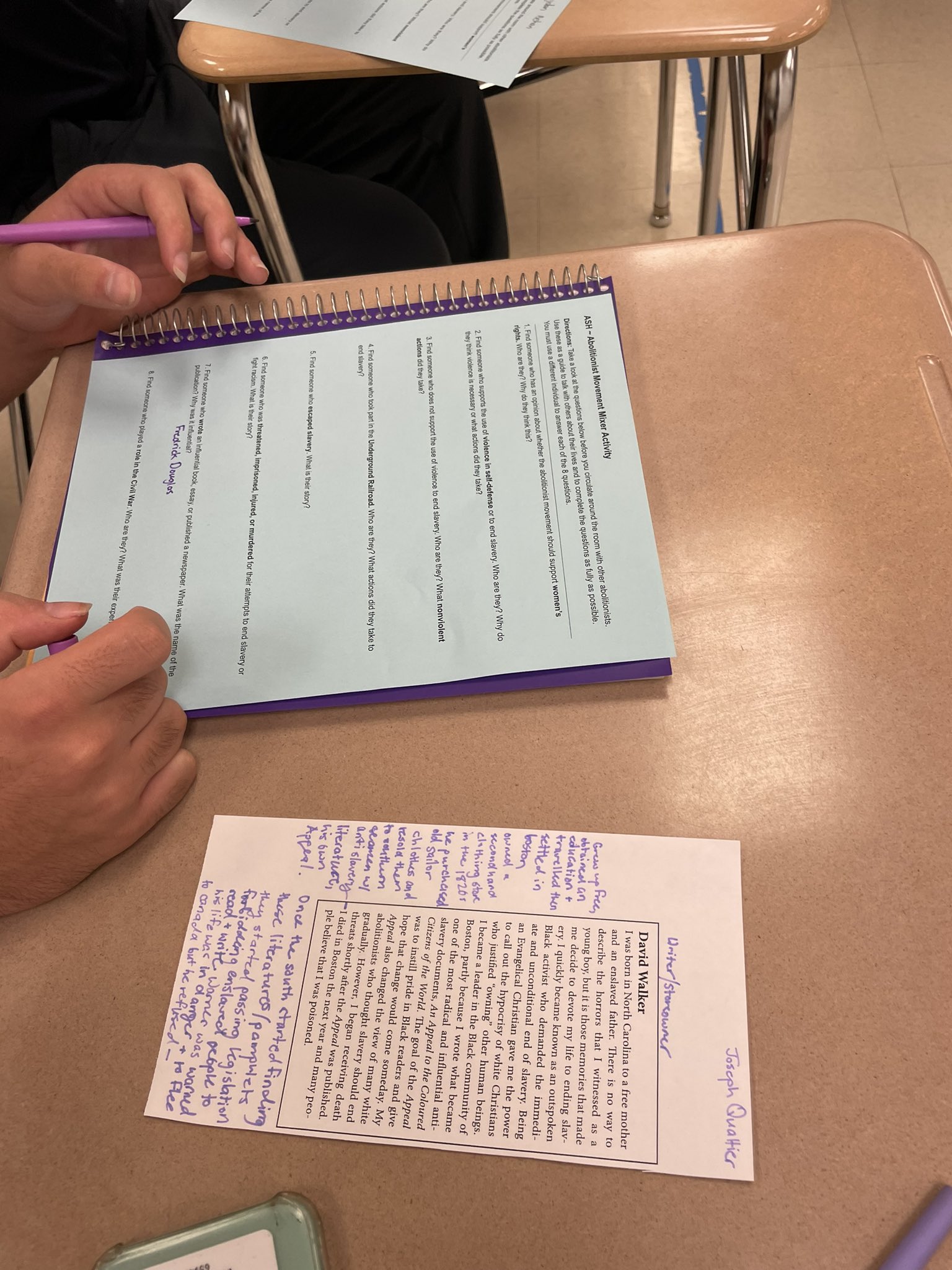
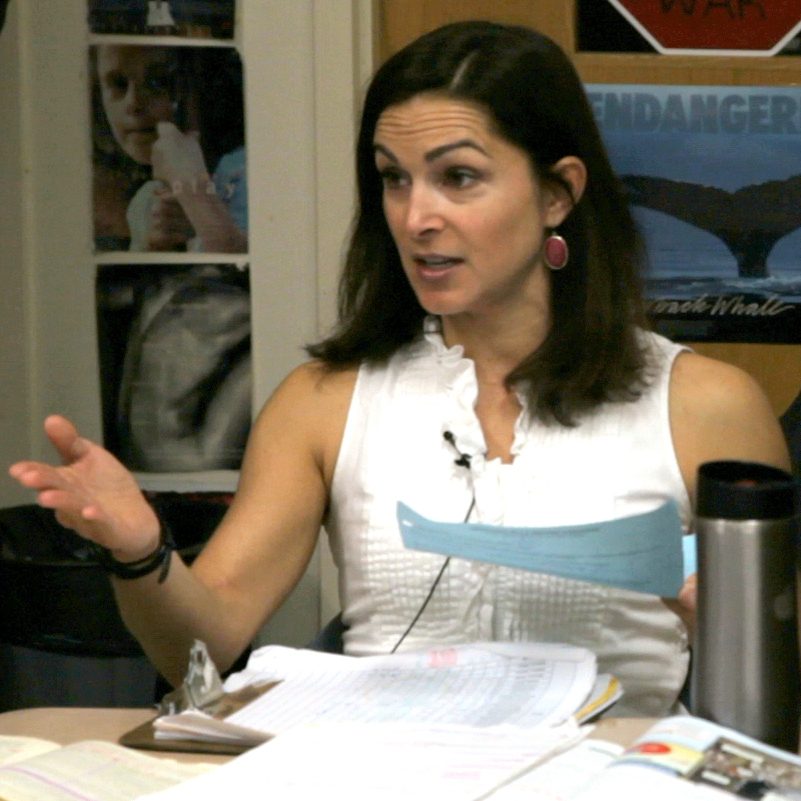
Survey course teachers are often challenged to present a full understanding of the important roots of the Abolition Movement and its larger context in all of U.S. History.
As abolition is considered one of the largest social movements in U.S. History, it’s important for students to recognize and understand the diversity, disagreements, tactics, milestones, and limitations in this collective effort to abolish the institution of slavery prior to the Civil War.
Students found Who Fought to End Slavery? Meet the Abolitionists incredibly engaging as they simultaneously utilized their audio, visual, and kinesthetic learning skills during the Mixer. When asked if this was a useful instructional tool, students said the repetition of intimate conversations allowed them to really learn their “role” as well as practice speaking and listening skills in an informal environment.
The debrief was particularly powerful as the students shared what they learned from the mixer activity that modified their understanding of abolition in antebellum America.
While Lincoln indeed contributed to the abolishment of slavery, the students were able to recognize the courageous small and large efforts and acts of both ordinary and extraordinary Americans who chose to take a stand to bring the shared values of freedom, justice, and equality to so many others.
Elementary School Adaptation
We have been studying the Civil War and wanted to value the work of abolitionists. We came across the lesson Who Fought to End Slavery? Meet the Abolitionists in the book Teaching a People’s History of Abolition and the Civil War and thought it was the perfect contribution to our curriculum. Although this lesson was written for an older audience, we felt the reading level of each character description and the overall format of the lesson were accessible to our fifth graders; so we did not make any modifications to the lesson.
After watching a video about Frederick Douglass and his important contributions to the abolitionist movement, students were given short biographies of other abolitionists to study in preparation for the role play. Among the people represented were: Harriet Tubman, Sojourner Truth, John Brown, William Lloyd Garrison, Angelina Grimke, David Ruggles, Harriet Forten Purvis, Harry Jarvis, Elizabeth Cady Stanton, David Walker, and Lucretia Mott.
Once students had read their biography three times and highlighted the three most important ideas, they were then given a questionnaire and asked to mingle with the other “guests.” Students were asked questions such as: “Find someone who has an opinion about whether the abolitionist movement should support women’s rights. Who are they? Why do they think this?” or “Find someone who supports the use of violence in self-defense or to end slavery. Who are they? Why do they support the use of violence or what actions did they take?”
During the lesson debrief we asked students ,“Whose story did you find the most interesting?” Many students indicated they were surprised by John Brown because he was a white man who gave arms to enslaved people as a means to fight against their bondage. In response to the question, “Why do you think we have not heard of many of these individuals?” A student responded, “White people would not have wanted the public to know about these individuals because these people posed a threat to their power and they did not want to lose their power.”
The level of student engagement during the role play and student responses during the debrief were indicative of how successful this lesson was with our students. We are more than excited to use more Zinn Education Project lessons in our curriculum!
 This lesson is published by Rethinking Schools in Teaching a People’s History of Abolition and the Civil War.
This lesson is published by Rethinking Schools in Teaching a People’s History of Abolition and the Civil War.

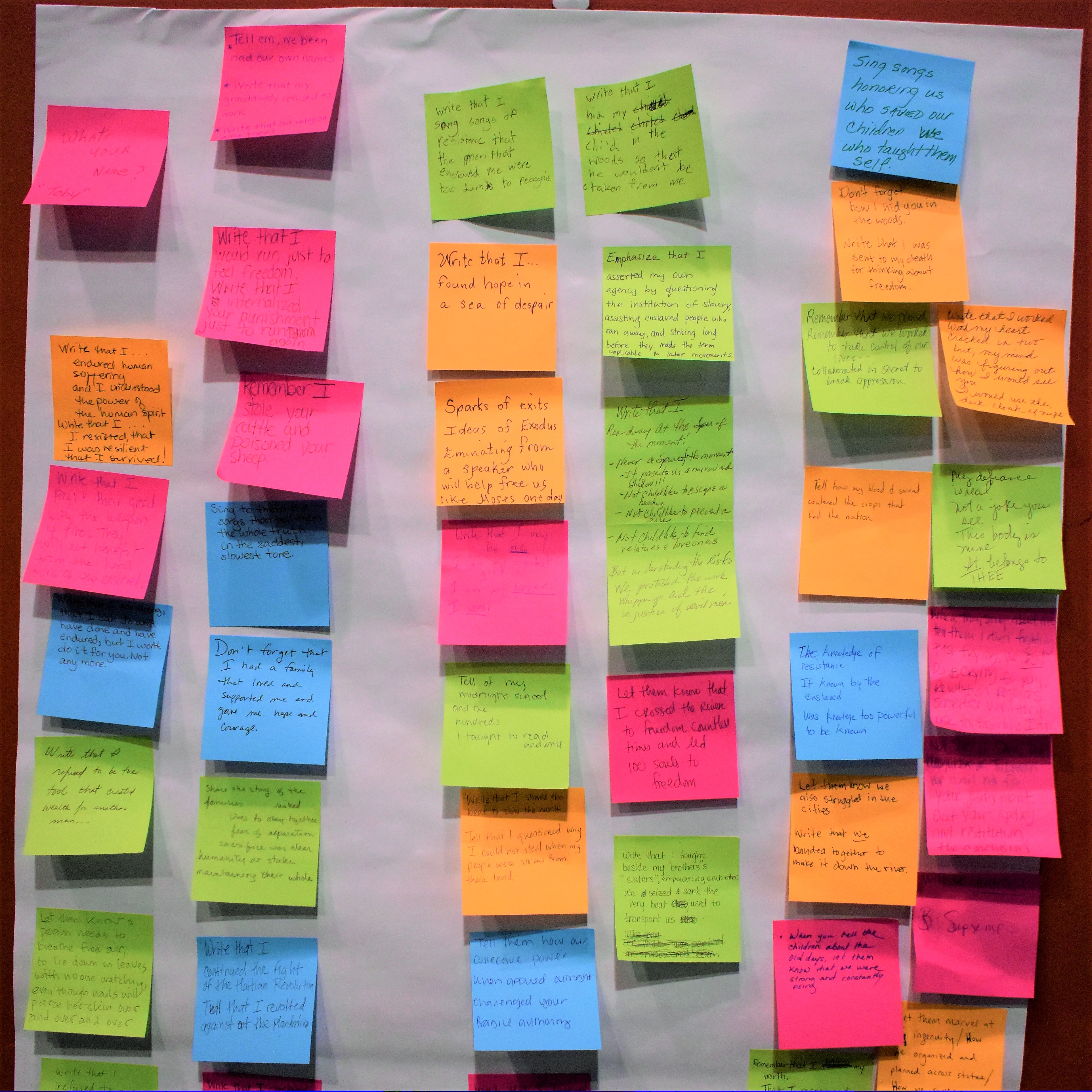
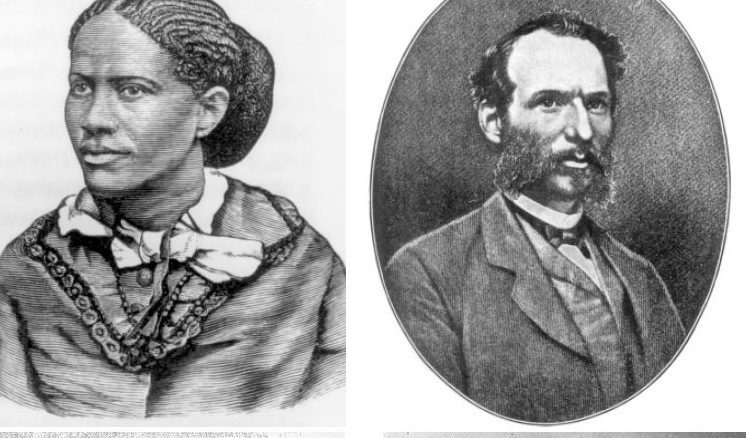
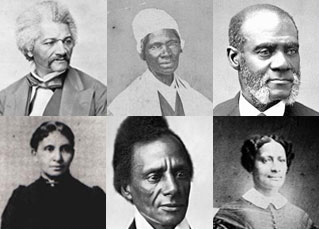
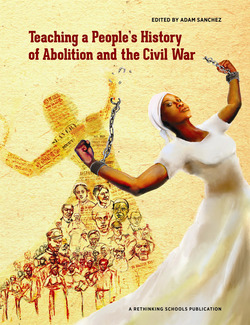
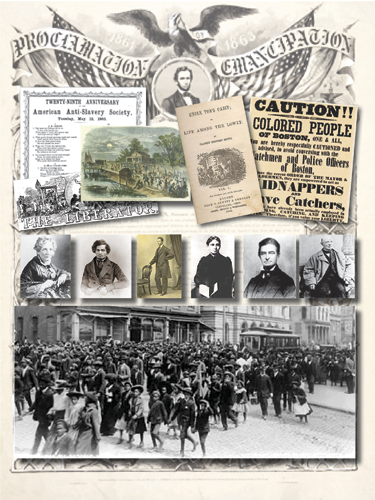
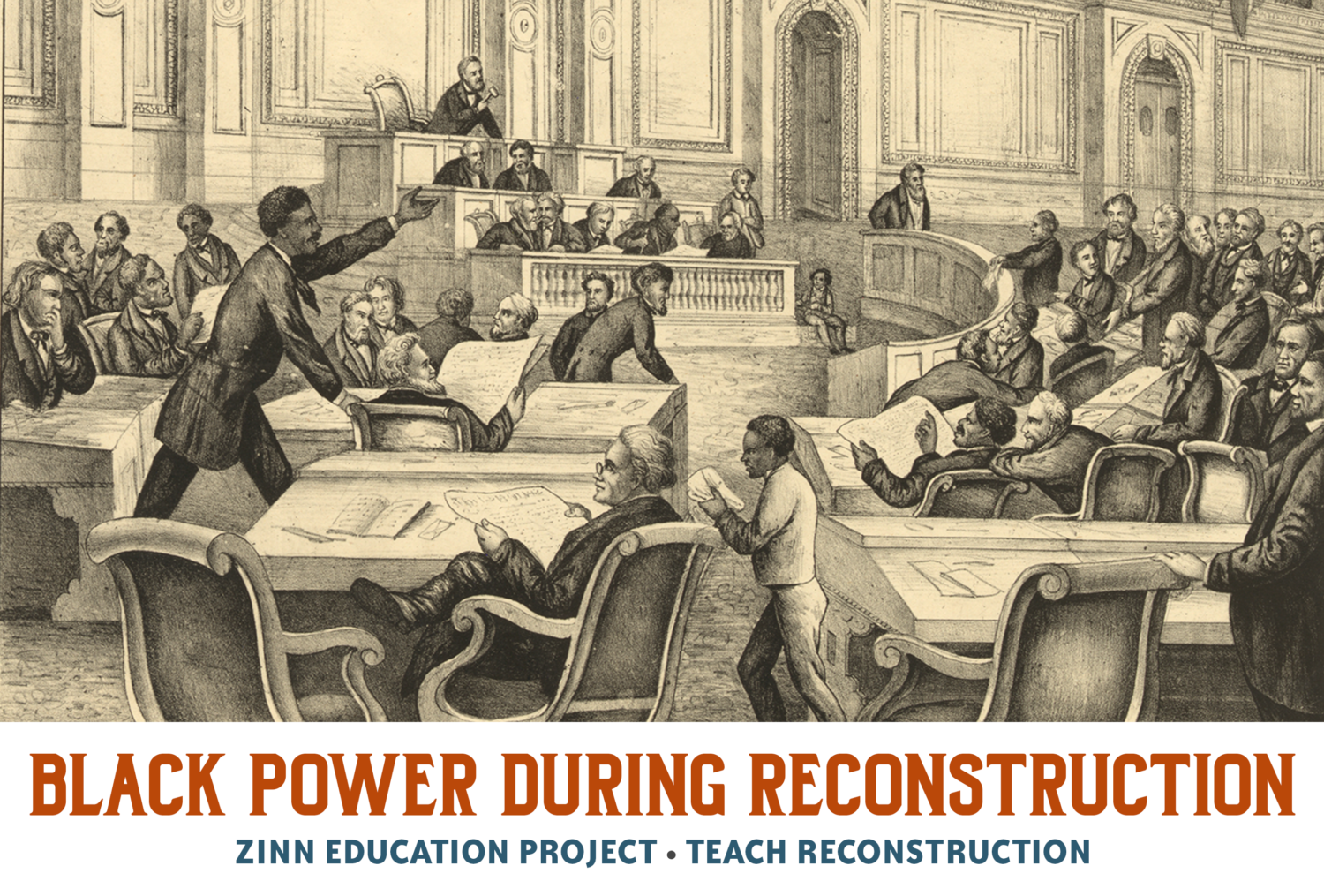
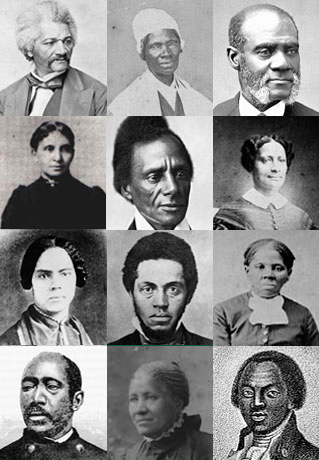
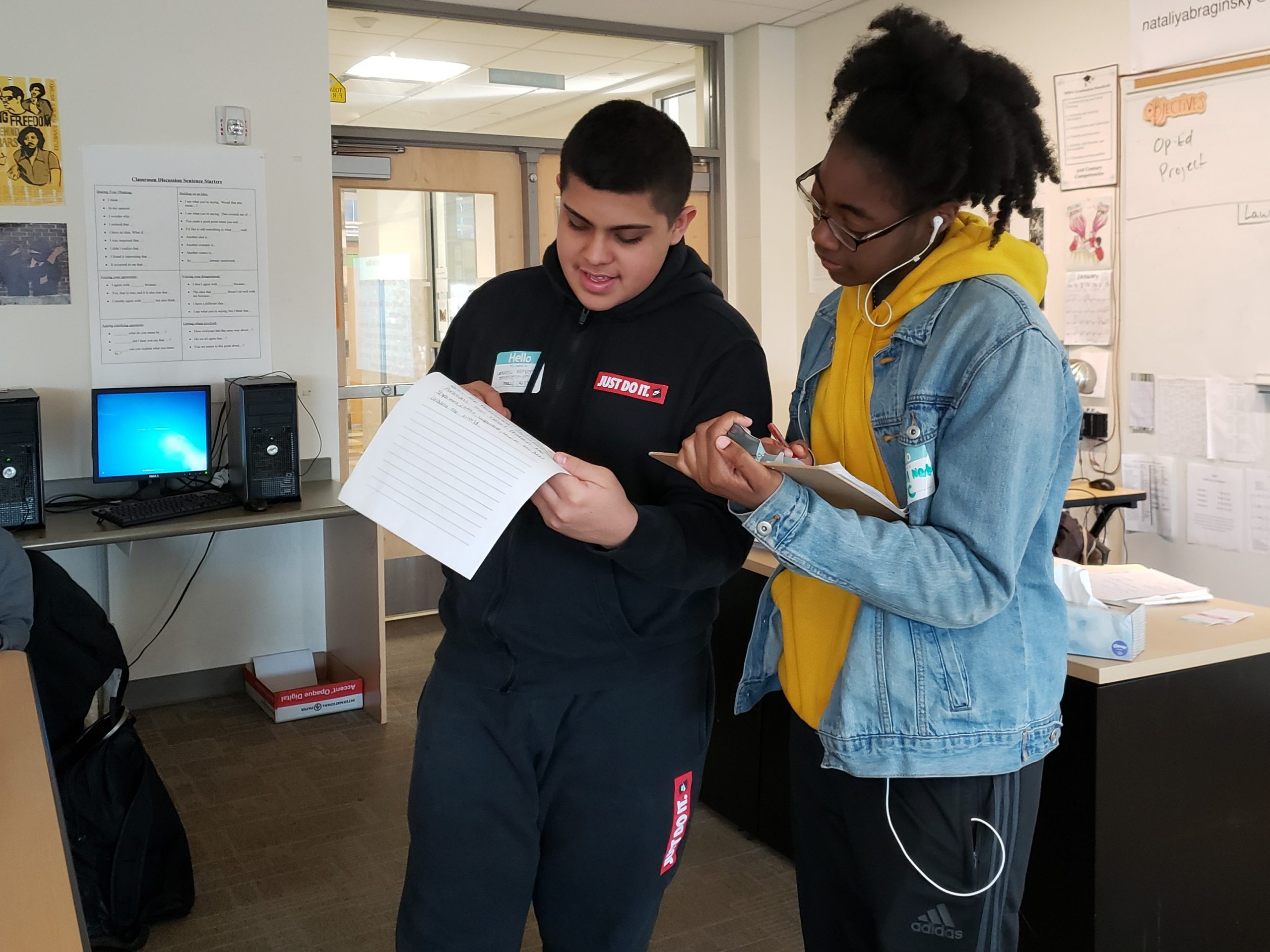






Twitter
Google plus
LinkedIn